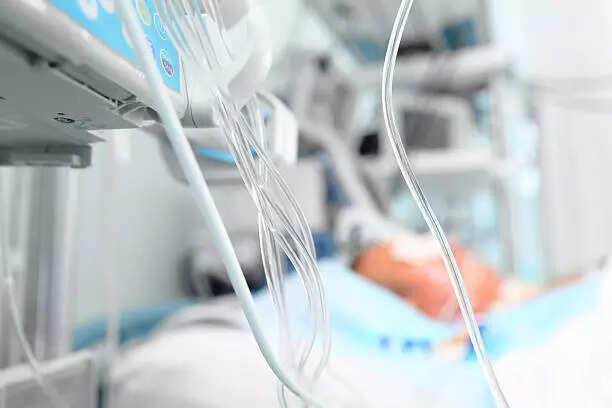
Mumbai: A seven-year study at 54 private and public hospitals and 200 ICUs in India has found over 8,600 cases of severe bloodstream infections linked to mismanagement of tubes inserted into large veins to deliver medicines and fluids. These are called central lines, with newborns most at risk.
About 40% of patients with central line infections died within two weeks. The rate: 8.83 central line infections per 1,000 central line-days, meaning nine infections for every 1,000 days that central lines were used. The study, just out in Lancet, recorded 9,77,052 central line-days. The figures are much higher than reported in the US, where the rate even in 2020 (Covid year) was 0.87 per 1,000.
Doctors said newborns are vulnerable to most infections, and when they need central lines in ICUs, the risk increases. The study, titled ‘Profile of CLABSI (Central-Line Associated Bloodstream Infection) Infections in Adults’, said 87% of Acinetobacter and 78% of Klebsiella infections – the two most common culprits in such cases – were resistant to carbapenems, a class of antibiotics considered a last resort. One more culprit, Candida auris – a fungal infection known for its drug resistance – was also a frequent cause. These reach central lines through contaminated hands, equipment or medicines, and enter the bloodstream.”There is a haphazard use of third-line antibiotics like carbapenems because they are the most effective to a point that now they are being rendered useless. We have allowed this resistance to develop because of a lack of monitoring mechanism and guidelines,” said Dr Hemalata Arora, infectious disease expert at Mumbai’s Nanavati Hospital. Microbiologist Dr Rajesh Karyakarte, from Pune’s BJ Medical College, said most anti-fungals fail before Candida auris and it is most difficult to wipe out of hospital settings: “Resistance rates to bacterial infections are alarming. Carbapenems have proven to be the safest ones. Eventually, doctors may have to switch to alternative antibiotics for certain infections which could be more toxic.”Conducted between 2017 and 2024, the research was led by Healthcare Associated Infection Surveillance Network and coordinated by AIIMS, New Delhi, with funding from US Centers for Disease Control and Prevention. The authors, all microbiologists from across India, wrote that infection rates peaked in 2020-21, coinciding with Covid, when overwhelmed ICUs, staff shortages and strained infection-control practices likely played a role. Rates fell the following year but rebounded, leading them to conclude that the issue is persistent.
Dr Arora said transmission of central line infections are bound to occur but the point is to reduce incidence. “The rate of infection differs from hospital to hospital. In bigger hospitals, it is 1 or 2 per 1,000 central line days. Smaller hospitals could have 15 to 20, even 30 to 40 per 1,000,” she said.
A paediatrician and infectious disease specialist from Mumbai said, “In most govt and semi-govt setups, doctors as well as allied staff are overworked due to staff shortage. Very sick patients often require prolonged use of central lines, and for paediatric patients, repeated needle pricks are difficult, so central lines are kept for longer durations. But these central lines are often not managed properly because of inadequate training and understaffing.”




